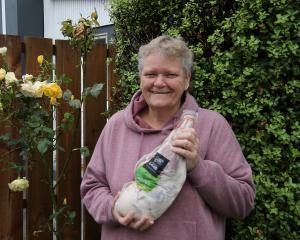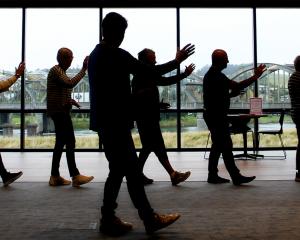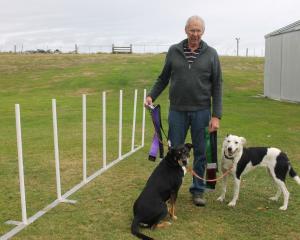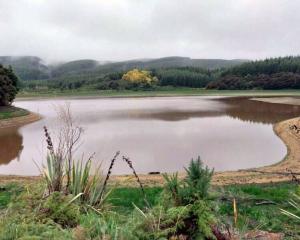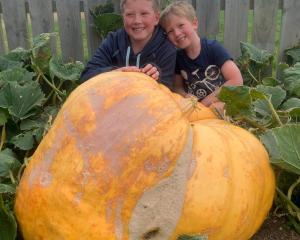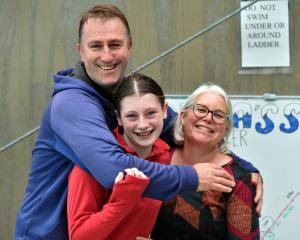Dressed to the nines, hardy pioneers came from across the South Island to the first Monster Picnic held at Black Gully, in the lower reaches of the Blue Mountains, 150 years ago. The event is revived every few decades. HamishMacLean takes a look back before its return next Saturday.
Even at a picnic people were better dressed in the past.
That is the conclusion of Black Gully Sesquicentennial Committee member Peter McPherson.
He has been looking into the history of ''Monster Picnics'' in the Blue Mountains, dating back to 1863.
On February 19, 1912, on page 7, the Mataura Ensign ran the headline ''A day of delight: Monster Picnic at Tapanui''.
The newspaper reported that a third picnic with monstrous numbers of attendees had provided sport, games, music and dance for 2500 people at Black Gully ''on Saturday last''.
''The day was glorious, and there was not a breath of wind nor a cloud in the sky. Food and drinkables were sent in from all parts of the district, with the result that there was enough and to spare,'' the newspaper reported.
''Three such picnics have been held, though at sufficiently distant dates as to make the affair practically a new experience to most of those present. The first was held about 30 years ago, the second about 18 years since and the third on Saturday last.''
The sesquicentennial committee is hosting a picnic next Saturday to remember the days when people flooded into the western lower reaches of the Blue Mountains more than 150 years ago.
To date, five Monster Picnics have been held in the area, 12km north of Tapanui.
Mr McPherson, of Tapanui, said his grandfather would have attended the picnic of 1912.
Mr McPherson was at the last Monster Picnic in 1956.
At this year's picnic, children's games of the ''bygone era'' and entertainment throughout the day will set the atmosphere, and those who come are encouraged to bring a picnic basket and dress in period costume.
Prizes will be awarded for the best dressed and for the best moustache or beard. Memorabilia will be on display to show the history.
Mr McPherson has been reading old editions of the Tapanui Courier at the West Otago Vintage Museum, and collecting old photographs and other items in preparation for the day.
He said he wants to share the story, not only of the first picnic in 1863, but of Hugh McEwan, the man who first built a picnic site at Black Gully and lived in the area for 40 years until he died.
Mr McPherson also wants to tell the story of the Black Gully Domain Board, established in 1926 after Mr McEwan's death.
Mr McPherson's father was a chairman of the board in 1945. Mr McPherson was chairman himself at one point as well. His son Alan is chairman now.
''She was always a busy place in past years,'' Mr McPherson said.
''Times have changed, but in the 1960s, '70s ... if you went to Black Gully there would be 100 people there for a Sunday.
''It was somewhere to go. It wasn't far to go. It was a nice place, you could go there and have a cup of tea.
''You might meet your neighbours there.''
But 100 people pales when compared with what the committee says happened only six years after European farmers came to the area to work at Brooksdale Station.
The committee estimates 6% of the population of the lower South Island came to the first Monster Picnic in 1863 when 2000 people showed up, arriving from great distances.
Those who came to the first picnic would have had to stop overnight, travelling in a horse and cart, on their way.
''They wouldn't have been the best of roads either, no bridges over the streams or anything, you made your own way.''
He said it had been difficult to find records of Black Gully beyond newspaper accounts before the board was set up in 1926.
Black Gully's last resident, Mr McEwan, arrived in the late-1800s and cut posts, rails, droppers and firewood from the forest for the area's farmers.
''During his time there he saw the potential for the place,'' Mr McPherson said.
''So he built playground equipment there: swings, roundabouts and a ... [trolley], he dammed the creek, there were ducks there ... all for people's entertainment.''
The park at Black Gully is his legacy. The first domain board raised 300 in 1926 to renew the playground equipment.
The first modern-day Monster Picnic is a celebration of the place and the history there, ensuring it is kept alive.
And perhaps it was not so very odd to have families dressed in their finest clothes spending days on the road to come to West Otago for an afternoon of fun in the summer about 150 years back, Mr McPherson said.
People not only dressed well, they were hardy back then.
''That was the thing in those days,'' he said.
''If they were going to do it, that's what they were going to do.
''You can relate it to the people that came [to Otago and Southland] at that time.
''They got into a leaky old tub with absolutely no facilities and they sailed for eight weeks through seasickness and all the things that went on. If you confronted people with that today, they wouldn't have a bar of it.''






